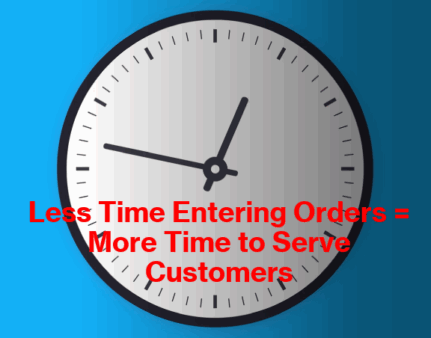This week we’ve been on calls with key distributors and working on our latest benchmark research about how automated order management is creating “barriers to exit” for customers. We are preparing this full report for a webinar and white paper in partnership with our friends at Conexiom.
I’m excited to be co-presenting this webinar and crafting the white paper research project, as I was an early Conexiom customer at a couple of billion-dollar distributors in my career.
What struck me as we are working on our research questions and charts was the significant change in the inside sales role for most distributors. This shift has been dramatic, driven by the evolution of the end customer and advancements in technology.
It wasn’t long ago that distributors paid bonuses to our inside sales teams based on the number of lines they entered into the ERP. The more lines an inside salesperson entered, the more bonus money they received. That inside sales human-computer who could quickly and efficiently type complex part order nomenclature was incredibly valuable.
The time every distributor spent processing orders was significant. Around 2010 a large construction distributor team I was on, we tried to calculate how many hours per week our team spent entering orders. It was challenging, as we had a thriving counter business, outside sales teams calling in orders, orders arriving via email, fax, and orders we took over the phone from end customers.
At that time, we estimated that our inside teams (and counter people) spent 20-40% of their time simply entering orders we already had. That manual process did create some errors, credits, and rebills of course, but with an experienced team who knew their products, we had fewer data entry errors than the competition.
Today, there is no longer an advantage in entering orders faster and with fewer errors than the competition. End customer expect orders to be processed electronically – whether it’s via text, direct system connections (Mccormack, Coups, Ariba, etc.). EDI, email, direct file uploads to a portal, or other methods.
Customers now have two simple expectations when they send you an order:
- The order will be entered properly and immediately.
- They will receive confirmation of the receipt of the order, details of what they ordered, and the delivery timeframe.
They expect quick communication on any issues, such as out-of-stock or and back orders. Speed and accuracy are no longer optional, they’re expected. If you can process orders faster and more accurately, it gives you a slight competitive advantage (especially if you’re competing against distributors still manually entering many orders).
The real competitive edge lies in freeing your teams time to focus on selling.
Freeing your team to serve customers and sell is the path to above-market growth
Today, distribution customers have more choices than ever, which has intensified competitive pressure. The days of phoned-in purchases and busy counters are gone. The percentage of orders arriving via email, text, Excel spreadsheet, EDI, direct ERP connect, portal uploads, and websites/apps continues to rise each and every year.
Your customers don’t just want, they expect, seamless, accurate, and fast order experiences. Distributors who fail to meet these expectations risk losing business to more tech-savvy competitors. Oh, and customers expect zero errors, while also wanting assistance in catching mistakes they may make on their end.
But this customer shift isn’t just a challenge. It’s a huge opportunity.
In our webinar, you’ll discover how leading distributors are turning order processing into a competitive advantage. We’ll explore new research on how digitizing the order process not only improves operational efficiency, but also strengthens customer relationships, drives revenue, and creates powerful competitive barriers to exit (and barriers to entry for your competition).
Please join Conexiom, and the Channel Marketing Group, with myself and David Gordon on August 26th Webinar | Customer Loyalty by Design: How Smarter Order Processes Unlock Sales Growth to see tactical examples and case studies on how order excellence can be the competitive advantage you are looking for in 2025.
As always, we appreciate your comments and support,
